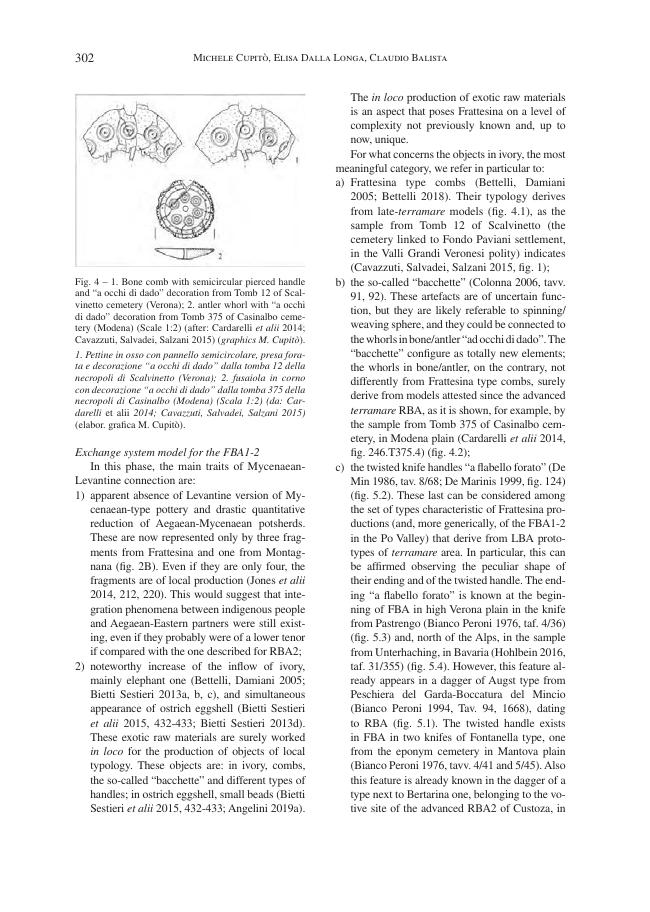From Valli Grandi Veronesi system to Frattesina system : observations on the evolution of the exchange system models between Veneto Po Valley area and the Mediterranean world during the Late Bronze Age.
P. 293-310
The paper analyses the theme of the relationships occurred between Veneto Po Plain and the Mycenaean and Levantine world in the RBA2 and in the FBA1-2. The aim is to define the main characteristics of the exchange models that shaped up in these two phases. On the methodological level, the work examines first of all the development of the distribution of settlements of the area between Verona Plain and the Polesine, considering it for itself and in relation to the transformations of the complex river system of the zone, referring in particular to the Adige and the Po rivers. After having delineated this essential framework, the paper analyses the main archaeological indicators of the connection with Aegaean area and Eastern Mediterranean world in terms of typology-function and geographical distribution.
Thanks to this step, the work comes to a definition of the exchange models and to a critical comparison between them. For what concerns contents, the paper shows that: a) in the RBA2 the relationships with Mycenaean and Levantine partners, that were controlled and managed by the terramare polity of Valli Grandi Veronesi, are characterized by a quite deep degree of interation and integration; moreover, they are based on the supply of Baltic amber, whose inflow towards Po axis (and beyond) was firmly controlled by the system of low-Verona plain terramare; b) in the FBA1-2 the Po Plain terminal of the relationships with the Aegaean area and the Eastern Mediterranean (still essentially based on amber) is Frattesina centre; even if the inflow of exotic raw materials has a noteworthy increase, the degree of the openness and integration of the indigenous communities towards Mycenaean and Levantine partners is certainly minor;
c) Frattesina is in the centre of two new exchange routes that guarantee the circulation on a wide scale of the products of its flourishing craft productions. The first of these routes has a SW-NE direction; it reaches north-western Balkans and Danube area passing through the eastern regions of the Caput Adriae. The second one has a NE-SW direction and it involves the Thyrrenian side of Italy (especially Etruria, Sardinia and Aeolian Islands) passing through Romagna, Marche and Umbria. As a whole, the work shows that Frattesina cannot be considered as a result of external inputs (not from Etruria, nor from Eastern Mediterranean area), but, on the contrary, that it represents the heir of Valli Grandi Veronesi polity, even if it shapes up as the focus of an exchange and relationship system that is for a large part new. [Publisher's text]
-
Articoli dello stesso fascicolo (disponibili singolarmente)
-
Informazioni
Codice DOI: 10.32097/1132
ISSN: 2282-457X



